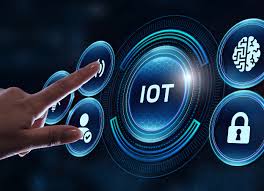IoT Software Overview
The Internet of Things (IoT) is a network of interconnected devices and sensors that collect, share, and analyze data to enable intelligent decision-making and automation. IoT technology is widely used in industries such as healthcare, agriculture, manufacturing, smart cities, and home automation. IoT software platforms and protocols provide the essential framework for connecting, managing, and analyzing these devices.
IoT Course Outline
1. IoT Essentials
- Introduction to IoT: Understand IoT concepts, architecture, and the impact of IoT across industries.
- IoT Ecosystem: Familiarize with devices, connectivity, data processing, and cloud services.
- IoT Architecture: Learn about device, network, data management, and application layers.
2. IoT Hardware and Device Setup
- Working with IoT Hardware: Introduction to microcontrollers like Arduino and Raspberry Pi, and various sensors.
- Device Connectivity: Learn how to connect sensors and devices to IoT software for data collection and control.
- Embedded Programming: Basics of programming IoT devices for data acquisition and task automation.
3. IoT Communication Protocols
- IoT Protocols: Overview of key protocols like MQTT, CoAP, HTTP, and LoRaWAN.
- Network Configuration: Setting up local and wide-area networks for IoT data transmission.
- Data Flow Management: Ensuring efficient data communication and processing between devices and cloud.
4. Cloud Platforms for IoT
- Cloud Services: Introduction to popular IoT platforms like AWS IoT, Google Cloud IoT, and Microsoft Azure IoT.
- Data Management and Storage: Techniques for managing IoT data on cloud servers.
- IoT Analytics: Use analytics tools for real-time monitoring, historical insights, and predictive analysis.
5. Security and Privacy in IoT
- IoT Security Fundamentals: Learn about encryption, authentication, and secure communication.
- Data Privacy: Implement protocols for data protection and regulatory compliance.
- Risk Management: Strategies for identifying and mitigating IoT security risks.
6. IoT Application Development and Deployment
- Developing IoT Applications: Create and design applications for controlling and monitoring IoT devices.
- Integration: Integrate IoT devices with software platforms for real-time control.
- Deployment: Test and deploy IoT solutions on cloud and edge devices.
Assessment and Certification (50 Marks)
- Assessment Task (20 Marks):
- Build a basic IoT project using connected sensors, such as a temperature monitoring system, and demonstrate data collection and reporting.
- Objective Test (30 Marks):
- Multiple-choice questions covering IoT software, protocols, security, and best practices.
Upon successful completion, participants will receive a Certificate of Completion, demonstrating their proficiency in IoT systems, protocols, and application development. This certification is valuable for those pursuing roles in smart technology, automation, and data-driven industries.

